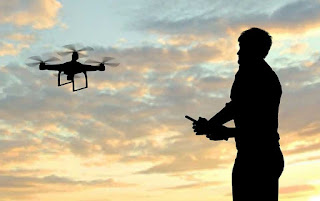Drones are increasingly being used in many fields including videography and photography and are standard equipment in undertaking these tasks. Other people, however, simply like using drones for recreational purposes. My friend recently taught me how to fly a drone as a beginner and I found it to be quite easy once I got the various operation needed to steer it.
The first step that I had to learn was how to control the drone. My friend explained to me that the drone is operated using a transmitter or a remote controller. I noticed that this device resembled a gaming controller since it had joysticks and buttons that served various purposes. My friend explained that while some models of drones can be quite complex, they usually have similar functions and features. He explained that the pilot of the drone operates the left and right stick using their thumbs. Using the sticks, the pilots can make the drone go left, right, up, down, or even diagonally.
According to my friend, the most important function of any controller include:
- Throttle
- Yaw
- Pitch
- Roll
My friends explained these concepts to me as follows:
The throttle controls the amount of power sent to the drone's motors, allowing for faster or slower flying speeds. The drone's altitude is adjusted by moving the left stick up and down. When flying, users frequently control the throttle in tandem with the right stick functions, so it's critical to become familiar with this function.
Yaw is the clockwise or anticlockwise rotation of the drone. The drone rotates anticlockwise by moving the left stick left and right. These maneuvers are key in enabling the user to turn the unmanned aerial vehicle in different directions without having to move it from its current location.
Pitch describes the forward or backward inclination of the drone. The drone moves forward and backward. This movement is achieved by moving the right stick up and down. According to my friend, while it may appear simple, utilizing the throttle and flying the drone with the drone facing you rather than the other way around makes it more difficult, so practice is required.
The term "roll" describes the movement of the drone to the left or right. The drone will fly and "roll" along the left and right sides. This movement is realized if you move the right stick left and right. This is especially useful for navigating trees and other barriers without having to change the drone's altitude or y-axis location.
Once I learned the basic concepts of how to fly a drone, my friend advised me on how I can get practical experience of flying a drone. The first thing to do is to find an open space for practice that has no obstacles and to make sure that it is permitted to fly a drone there. The next step is to position the drone well before takeoff, ideally on a flat surface. The next step was to connect the transmitter to the drone. According to my friend, it is important to push the throttle down right before you turn on the transmitter. Afterward, one should connect the unmanned aerial vehicle's batteries after turning on the transmitter. This is a crucial action that must be followed both before and after takeoff. After your flight, reverse the processes by disconnecting the unmanned aerial vehicle's battery and then turning off the transmitter. The next thing my friend taught me was how to do basic drone maneuvers such as taking off, landing, hovering, and rotating.
I found that learning to fly a drone was quite easy once I had practiced enough. After practicing for a full week, I was able to fly a drone relatively well. In my opinion, learning how to fly a drone is an increasingly important skill and more people should learn the basics of flying a drone.



No comments:
Post a Comment